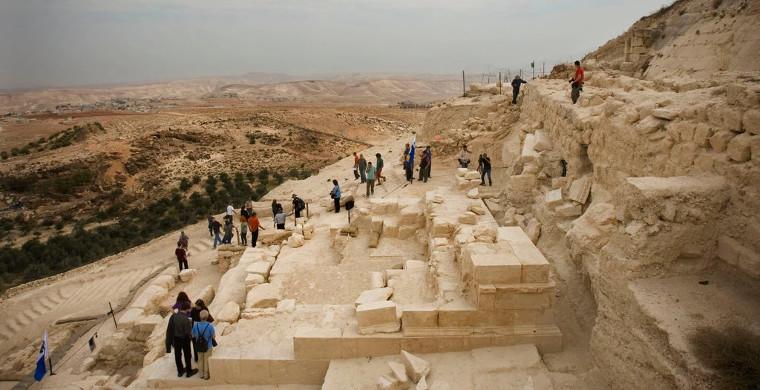Pontius Pilate's Name Is Found on 2,000-Year-Old Ring
The ring bearing the name of Pontius Pilate was discovered in the late 1960s, one of thousands of artifacts found in the excavation of Herodium, an ancient fortress and palace south of Bethlehem, in the West Bank.
Credit: Bernat Armangue/Associated Press
By Palko Karasz
https://www.nytimes.com/2018/11/30/world/middleeast/pontius-pilate-ring.html
Nov. 30, 2018
The name of Pontius Pilate, the Roman official who ordered the killing of Jesus, according to the Gospel, is mentioned in thousands of sermons every year and is familiar to countless people, but little is known about his life and work.
To the very short list of clues about Pilate as a historical figure, archaeologists have added one more: a 2,000-year-old copper alloy ring bearing his name.
The ring was discovered in the late 1960s, one of thousands of artifacts found in the excavation of Herodium, an ancient fortress and palace south of Bethlehem, in the West Bank. But it was not until recently that researchers, analyzing those objects with advanced photography, were able to decipher the ring's inscription.
It reads "of Pilates," in Greek letters set around a picture of a wine vessel known as a krater, and is said by archaeologists to be only the second artifact from his time ever found with his name. Kraters are a common image in artifacts of that time and place.
The findings were published last week in the Israel Exploration Journal, an archaeological review in Israel.
Pilate was the prefect, or governor, of the province of Judea, on the eastern fringes of the Roman Empire, roughly from A.D. 26 to 36.
The report says it is unlikely that the ring belonged to Pilate, in part because such simple rings usually belonged to soldiers and lesser officials, not to someone as wealthy and powerful as a prefect.
"We think it implausible that a prefect would have used a simple, all-metal, copper-alloy personal sealing ring with a motif that was already a well-known Jewish motif in Judea before and during his rule," it says.
"But in practice, we have a ring inscribed with the name Pilate and the personal connection just cries out," Roi Porat, one of the authors of the report told The Times of Israel. The name Pilate was not common in the region at the time.
The New Testament story of Pilate presenting a scourged Jesus to an angry crowd with the words "behold the man" -- "ecce homo" in Latin -- was a central theme of religious art for centuries.
Beyond the Gospel, most of what little is known about Pilate comes from the surviving work of the ancient historians Flavius Josephus, a Jew, and Tacitus, a Roman.
Herodium, where the ring was found, was built by Herod the Great, a client king of the Roman Empire, and is the site of his tomb. (One of his sons, also named Herod, was king in Jesus' time.) The site is controlled by Israel and is claimed by Palestinians.
The ring was found in a room filled with bits of glass, shards of pottery, arrowheads, coins and other items.
The language of the ring's inscription is Greek, which Roman officials used to communicate with the peoples of the eastern Mediterranean. It could have been used for official correspondence by Pilate himself and his officials who had to sign his name.
The first archaeological find in Judea that mentioned Pilate was a fragment of carved stone, discovered in 1961, in the ancient port city of Caesarea. It is known as the Pilate stone and is kept at the Israel Museum in Jerusalem.
"It solved the problem of what actual title he had," said Jonathan Price, professor of classics and ancient history at Tel Aviv University.
According to Mr. Price, for historians of the Roman period, Pilate was just one of a string of Roman officials who were sent to Judea to govern and keep the peace. Were it not for his biblical role, "he would be remembered as a Roman official who didn't do so well," he said.
During his decade-long tenure, which was longer than usual, Pilate displayed hostility to local residents and nearly provoked two uprisings.
"He was called back and called to account for what seemed to be a lack of competence," Mr. Price said. "And after that we don't really hear about him."
END














